How to Use Low Code for Life Insurance Agency Workflow Software Development
Date
Jul 11, 25
Reading Time
13 Minutes
Category
Low-Code/No-Code Development
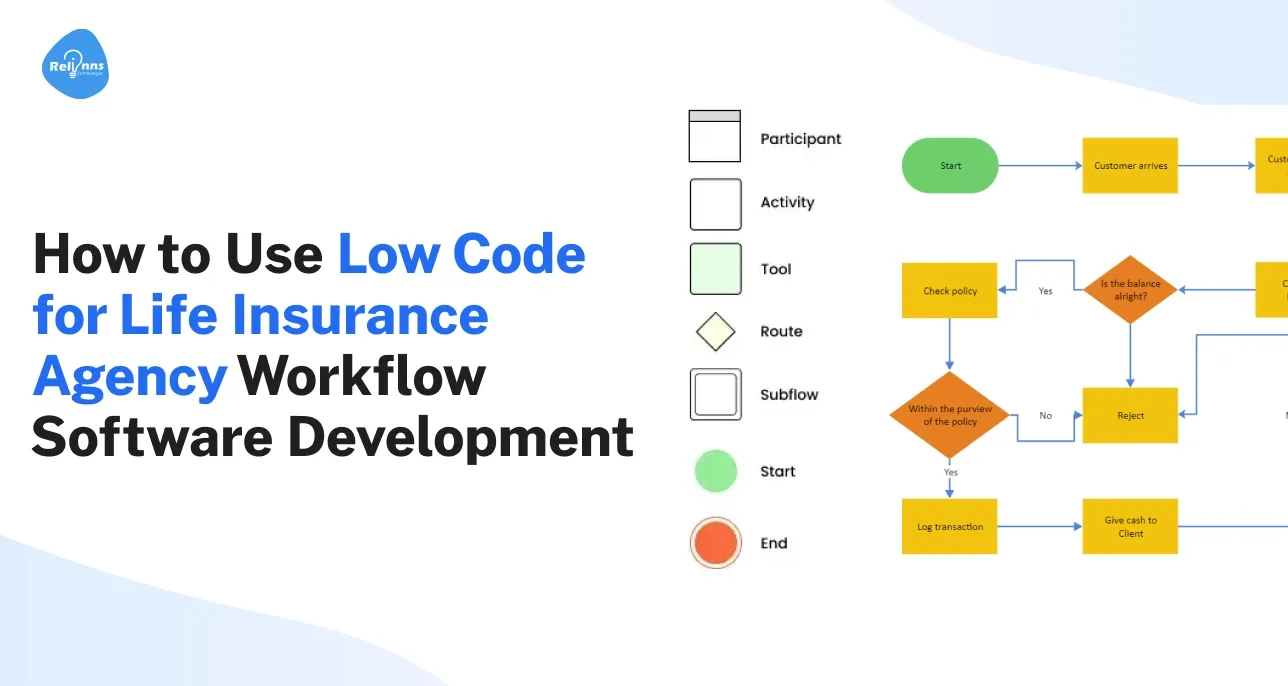
By 2025, 70% of new business applications are expected to be built with low-code tools—a bold forecast from Gartner that emphasizes a new era in app development. (Source: Visionpoint) For life insurance agencies, this means they can rapidly build custom workflow software without waiting months for IT teams.
The low-code market is projected to reach approximately $65 billion by 2027, according to Statista.
These platforms enable agencies to drag and drop components, integrate data, and launch secure apps up to 10 times faster than traditional coding—a key benefit noted by Forrester. With built-in enterprise security, compliance, and pre-built connectors, insurers can streamline their underwriting, claims, and onboarding processes.
In today’s fast-paced digital market, modern Life Insurance Agency Workflow Software powered by low-code isn’t just an option—it’s essential for cutting costs, reducing errors, and staying competitive.
Life Insurance Workflows: What’s Broken Today?
According to Baker Tilly, many insurers still rely on manual, paper-based processes that increase costs, slow operations, and erode customer satisfaction.
Agents and underwriters face constant delays—from quoting policies to approving claims—because legacy systems require repeated paperwork and data re-entry. In contrast, digital-first insurance carriers are growing 2.5 times faster than traditional ones, indicating that legacy workflows hinder progress. (Source: insights150)
Meanwhile, insurers worldwide spent $232 billion on IT in 2021, with nearly 70% of that budget allocated to maintaining outdated systems, leaving little room for innovation or automation.
Outdated platforms also increase compliance risks—HIPAA violations can cost up to $1.5 million per breach, and older systems often lack adequate audit trails. (Source: Wiikipedia)
McKinsey reports insurers using modern tech can handle up to 40% more policies per employee compared to those on legacy systems.
In short, life insurance agencies relying on outdated Life Insurance Agency Workflow Software suffer from inefficiencies, compliance exposures, and frustrated customers.
Even simple processes, such as claims, can take days instead of hours to complete. These challenges underscore the need to upgrade to modern, automated Life Insurance Agency Workflow Software.
What Low-Code Fixes for Life Insurance Agency (And How)
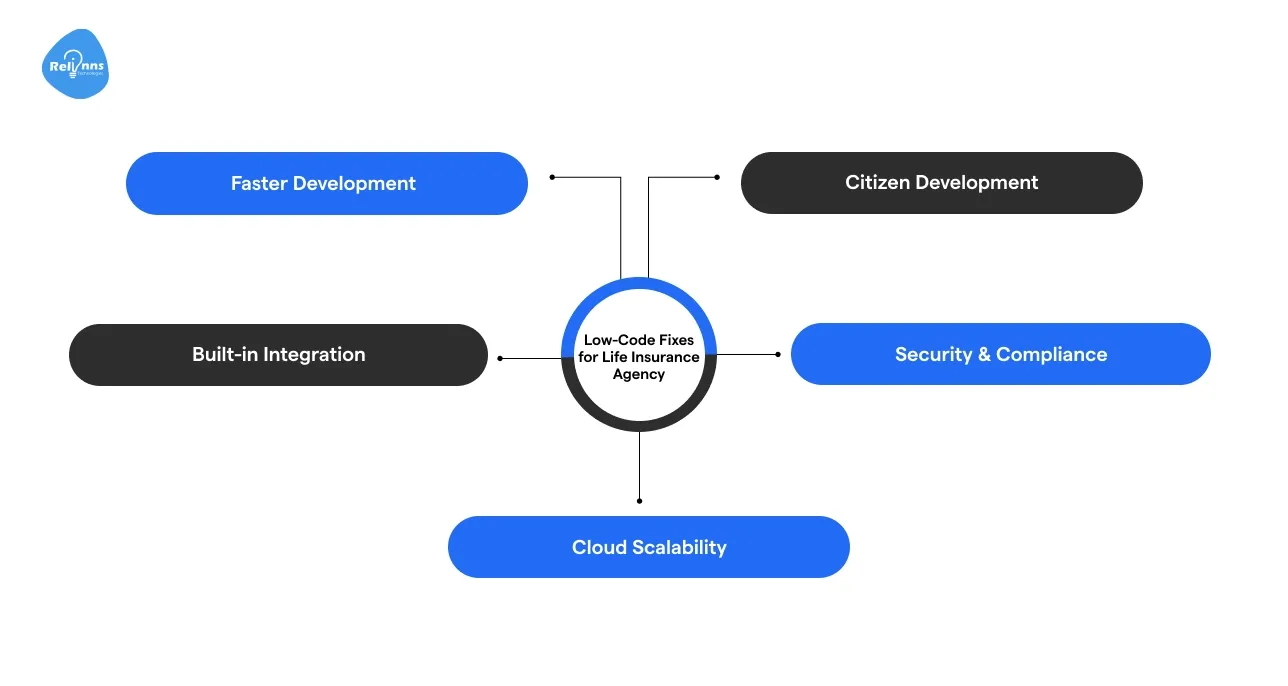
Low-code platforms provide insurers with a faster and more flexible way to digitize workflows, eliminating the need to rely entirely on overburdened IT teams.
According to Insuresoft, insurers can “deploy new solutions quicker than ever before” using low-code. This agility is critical in a competitive market where traditional development often takes months.
Here’s how low-code strengthens Life Insurance Agency Workflow Software
- Faster Development: Agencies can launch quoting, claims, and underwriting workflows in weeks, rather than months.
- Citizen Development: Non-technical users can build or modify apps without writing code, easing dependency on developers.
- Built-in Integration: Pre-built connectors integrate with CRMs, policy admin tools, and e-signature platforms, streamlining operations.
- Security & Compliance: Platforms provide audit trails, user roles, and validations, ensuring compliance with HIPAA and insurance regulations.
- Cloud Scalability: Most platforms offer 24/7 uptime with real-time updates, replacing outdated Excel-based tools.
Low-code also makes iterative improvements easier. Teams can adjust forms, logic, or policy rules in real time, without downtime or vendor lock-in. Features like dashboards and widgets help underwriters track claims or approvals directly within their Life Insurance Agency Workflow Software.
Ultimately, low-code enables automated, error-free, and scalable processes, reducing delays and freeing staff to focus on higher-value work. For life insurance agencies, it offers a reliable, cost-effective route to modernizing operations without overhauling everything at once.
Must-Have Features for Insurance Workflows
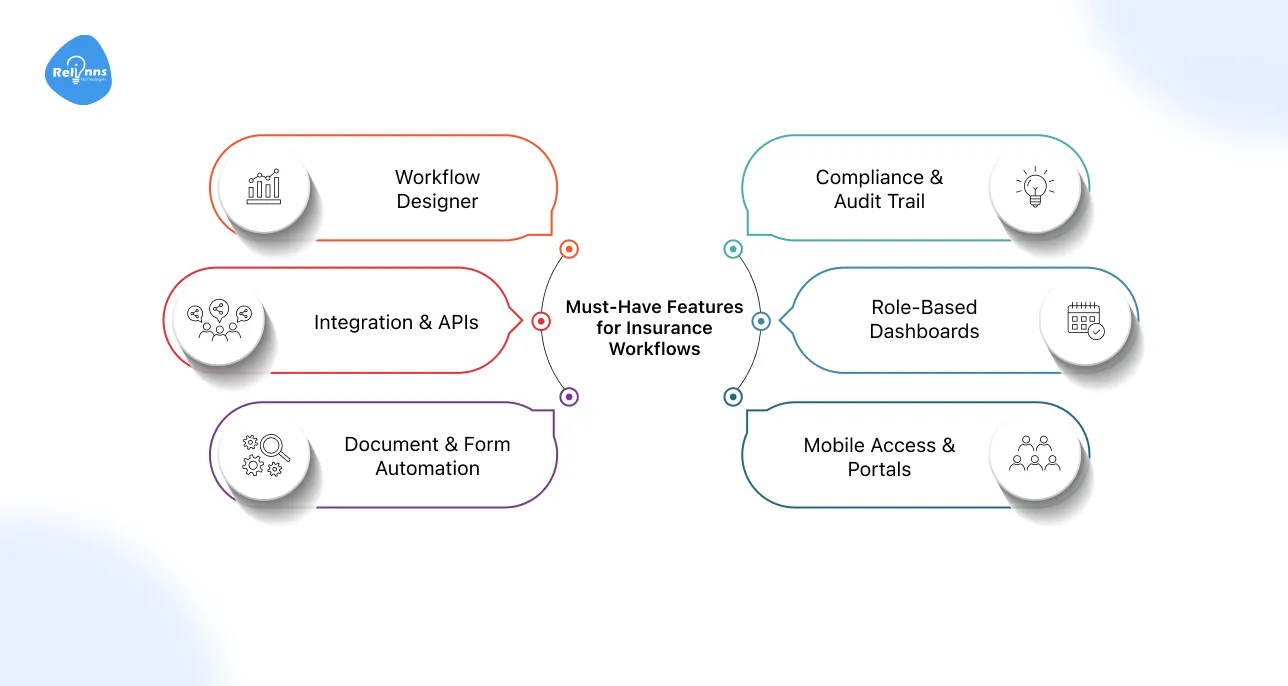
Life insurance processes require specialized support. The right Life Insurance Agency Workflow Software provides end-to-end automation with industry-specific capabilities.
It should streamline tasks such as quoting, underwriting, policy issuance, and claims, while also managing agent commissions and compliance.
Workflow Designer
- Automate quoting, underwriting, and issuance in Life Insurance Agency Workflow Software.
- Set rule-based approvals with escalation paths for complex insurance decisions.
- Configure multi-step workflows using visual drag-and-drop builders easily.
- Enable SLA tracking to ensure fast, accountable claims processing.
- Support end-to-end renewals and claims within one unified platform.
Integration & APIs
- Pre-built connectors link CRM, billing, and policy admin systems.
- Enable seamless data flow into Life Insurance Agency Workflow Software.
- Eliminate manual data entry across multiple legacy insurance platforms.
- Improve integration speed with existing insurance databases and tools.
- Automatically sync client records for faster, error-free processing.
Document & Form Automation
- Auto-generate quotes, policy documents, and digital claim forms instantly.
- Capture client data digitally with validations to reduce errors.
- Enable e-signature support for faster application and renewal completion.
- Speed up claims processing with pre-filled, auto-validated document templates.
- An essential document automation feature in Life Insurance Agency Workflow Software.
Compliance & Audit Trail
- Track every user action with built-in audit and log tools.
- Configure business rules to enforce insurance and HIPAA compliance.
- Ensure all approvals and changes are securely recorded and traceable.
- Maintain transparent workflows with detailed compliance reporting features.
- Auditing is vital in Life Insurance Agency Workflow Software platforms.
Role-Based Dashboards
- Show real-time KPIs for quotes, approvals, and pending tasks.
- Customize dashboards for agents, underwriters, and insurance managers.
- Trigger automated email/SMS alerts to keep tasks on track.
- Display key metrics directly in Life Insurance Agency Workflow Software.
- Help teams act faster with data-driven workflow visibility tools.
Mobile Access & Portals
- Use mobile apps to submit and track insurance requests at any time.
- Enable agents to manage workflows from any device, anywhere.
- Provide self-service portals that allow policyholders to view their policies securely.
- Boost customer satisfaction with faster, mobile-friendly service options.
- Ensure accessibility in Life Insurance Agency Workflow Software solutions.
5 Low-Code Platforms to Consider for Life Insurance Agency Workflow Software Development
For agencies building modern insurance workflows, low-code development can significantly accelerate the process.
The following five platforms are widely used for insurance app development and Life Insurance Agency Workflow Software. Each platform supports visual design, rapid integration, and can be used to create tailored workflow solutions for the insurance industry.
1. Joget
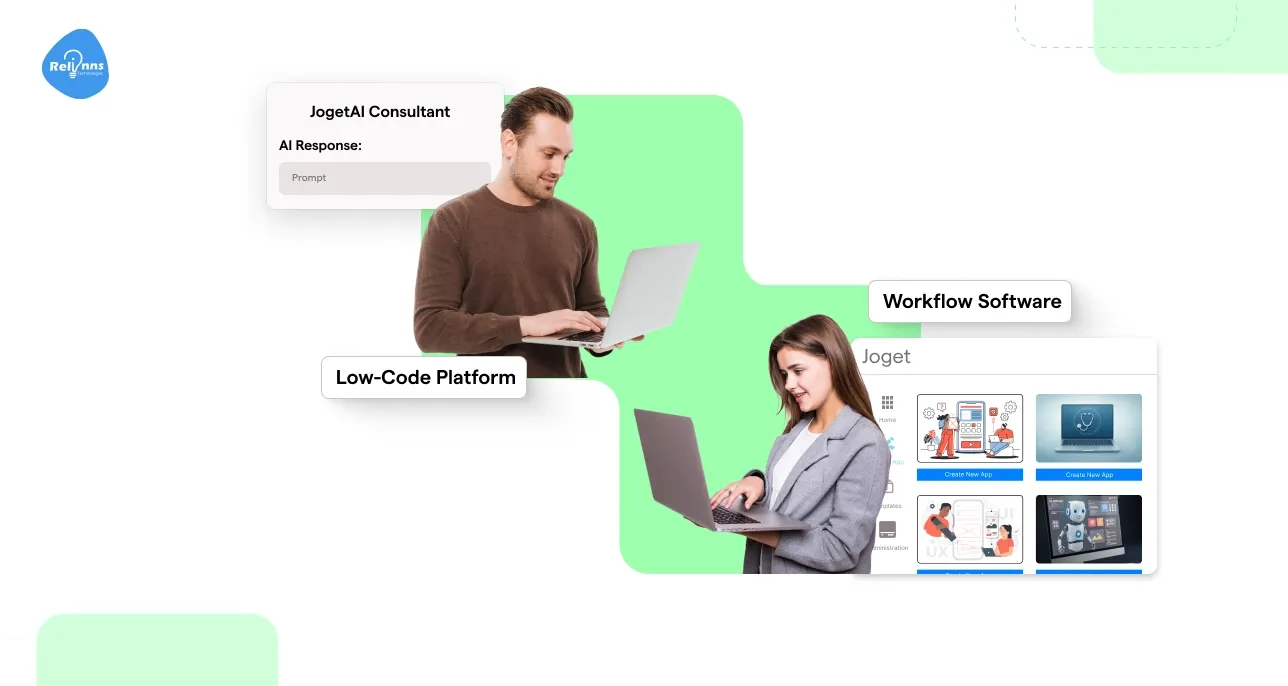
- Joget is an open-source low-code platform tailored for insurance workflow and policy automation.
- Agencies build Life Insurance Agency Workflow Software with drag-and-drop forms and visual workflow editors.
- Real-world use shows that Joget reduces claims processing time by 10 times and errors by 40%.
- Its modular architecture supports quick scaling, updates, and on-demand customization of insurance-specific workflows.
- Many insurers choose Joget to power flexible, cost-effective Life Insurance Agency Workflow Software solutions.
2. OutSystems
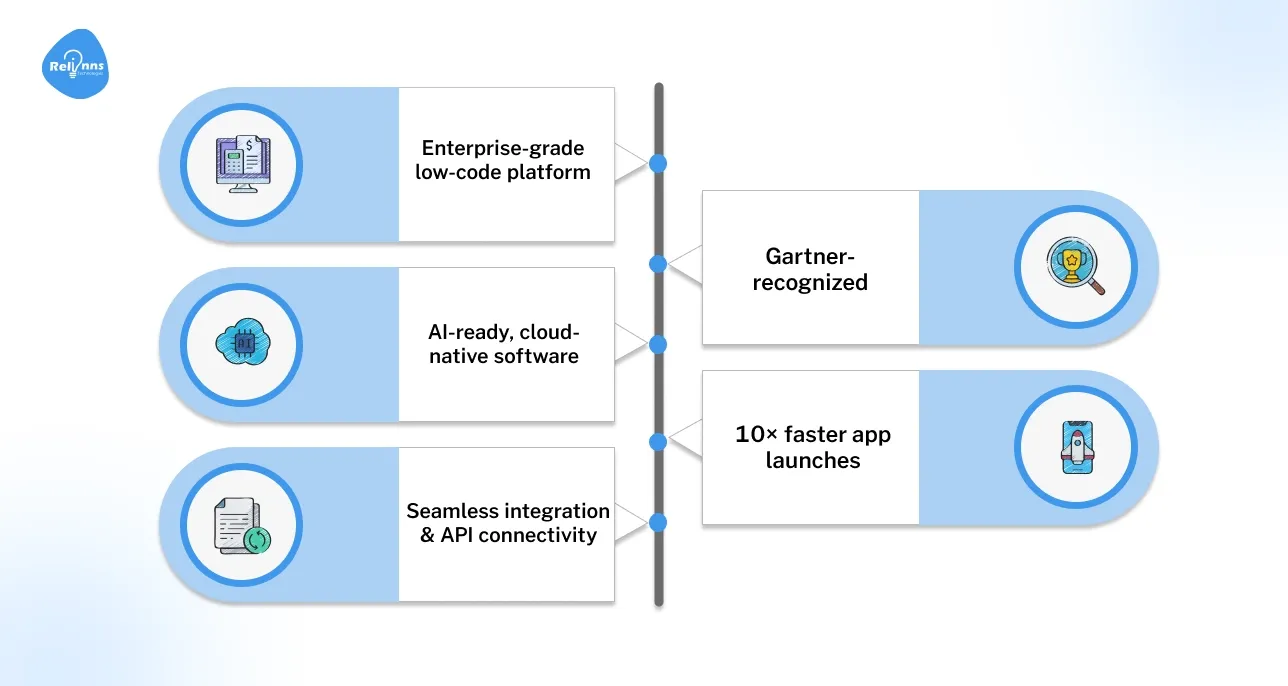
- OutSystems is an enterprise-grade, low-code platform ideal for modernizing insurance workflows.
- Enables insurers to build AI-ready, cloud-native Life Insurance Agency Workflow Software quickly and securely.
- Supports underwriting, claims, and policy workflows with fast system integration and API connectivity.
- Gartner praises OutSystems for enabling “fit-for-purpose” digital experiences and robust ecosystem design.
- Insurers report launching workflow apps 10× faster than traditional coding using OutSystems.
3. Zoho Creator
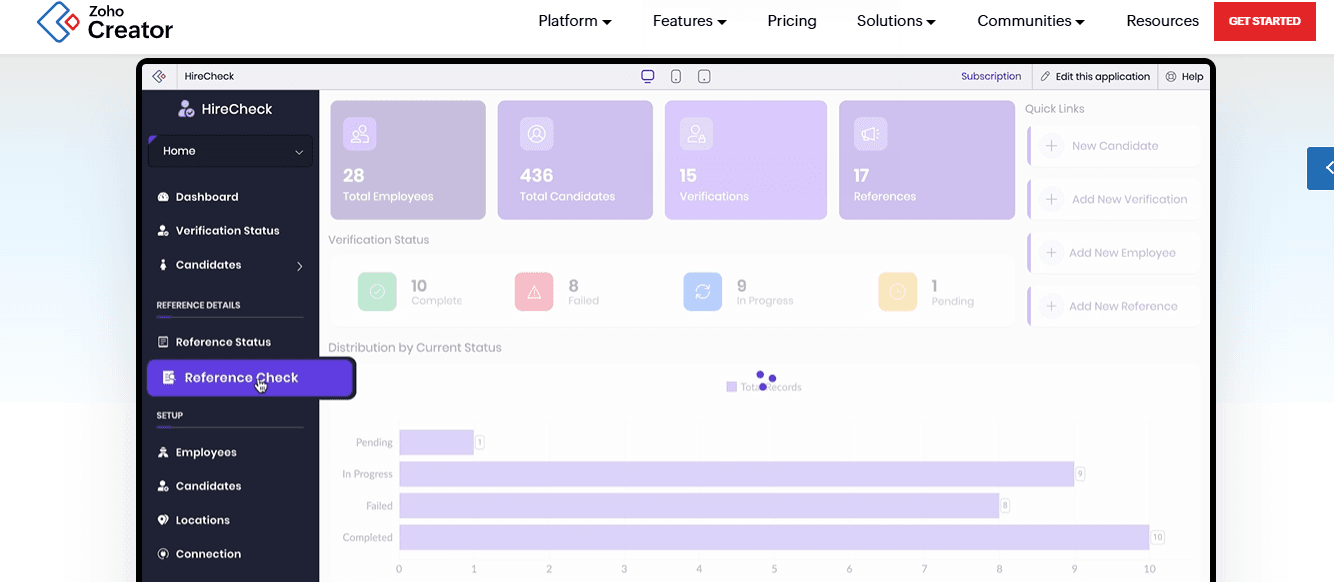
- Zoho Creator is a cloud low-code platform known for affordability and rapid insurance workflow development.
- Its drag-and-drop builder helps agencies digitize insurance tasks, such as quoting and onboarding, effortlessly.
- Used by over 13,000 businesses to streamline workflows with minimal developer involvement.
- Integrates seamlessly with Zoho CRM for unified Life Insurance Agency Workflow Software experiences.
- Ideal for prototyping or launching affordable Life Insurance Agency Workflow Software under tight budgets.
4. Creatio (formerly bpm’online)
- Creatio combines low-code development with CRM to automate insurance workflow end-to-end.
- Enables insurers to build Life Insurance Agency Workflow Software without writing a single line of code.
- G2 recognizes Creatio as a leader in low-code CRM and process automation platforms.
- Includes AI tools and industry accelerators to streamline renewals, claims, and customer engagement.
- Trusted by thousands to launch scalable Life Insurance Agency Workflow Software workflows daily.
5. Microsoft Power Apps
- Power Apps is a Microsoft low-code platform designed for building scalable, enterprise-grade insurance applications.
- Offers AI Copilot, drag-and-drop tools, and over 1,400 data connectors for seamless integration with insurance.
- One insurer reduced manual processing time by 60% by utilizing Microsoft Power Platform tools.
- Strong security and governance make it ideal for regulated Life Insurance Agency Workflow Software.
- Easily builds custom insurance modules, such as agent portals or claims, within existing Microsoft environments.
Policy Management Software – Joget DX8 Case Study
Problem:
A mid-sized insurance company was struggling with slow, paper-based operations and legacy tools that couldn’t keep up with rising client expectations. Manual data entry delayed policy issuance and created frequent errors, while disconnected CRM, broker, and payment systems added friction across every workflow.
Teams lacked real-time visibility into application and claims statuses, resulting in poor SLA adherence and inefficient processing. These inefficiencies directly impacted customer satisfaction and operational costs.
Solution:
To modernize operations, the insurer partnered with Relinns Technologies to implement a Joget DX-based Life Insurance Agency Workflow Software within 9 weeks. Using agile development, the team rapidly mapped, prototyped, and deployed workflows for policy issuance, claims, and payments.
The solution included audit trails, e-signature integration, PDF generation, and real-time SLA tracking. APIs connected the new system with existing CRM and broker platforms, eliminating duplicate entry and enabling faster decision-making across departments.
Results:
- 40% reduction in manual documentation and validation errors
- Claims processing time reduced from over 6 days to under 24 hours
- Improved SLA adherence through live dashboards and real-time task visibility
- Complete CRM and external system integration eliminated redundant data entry
- Automated receipts and full payment tracking integrated with the gateway.
Getting Started: How to Build Smart, Not Just Fast
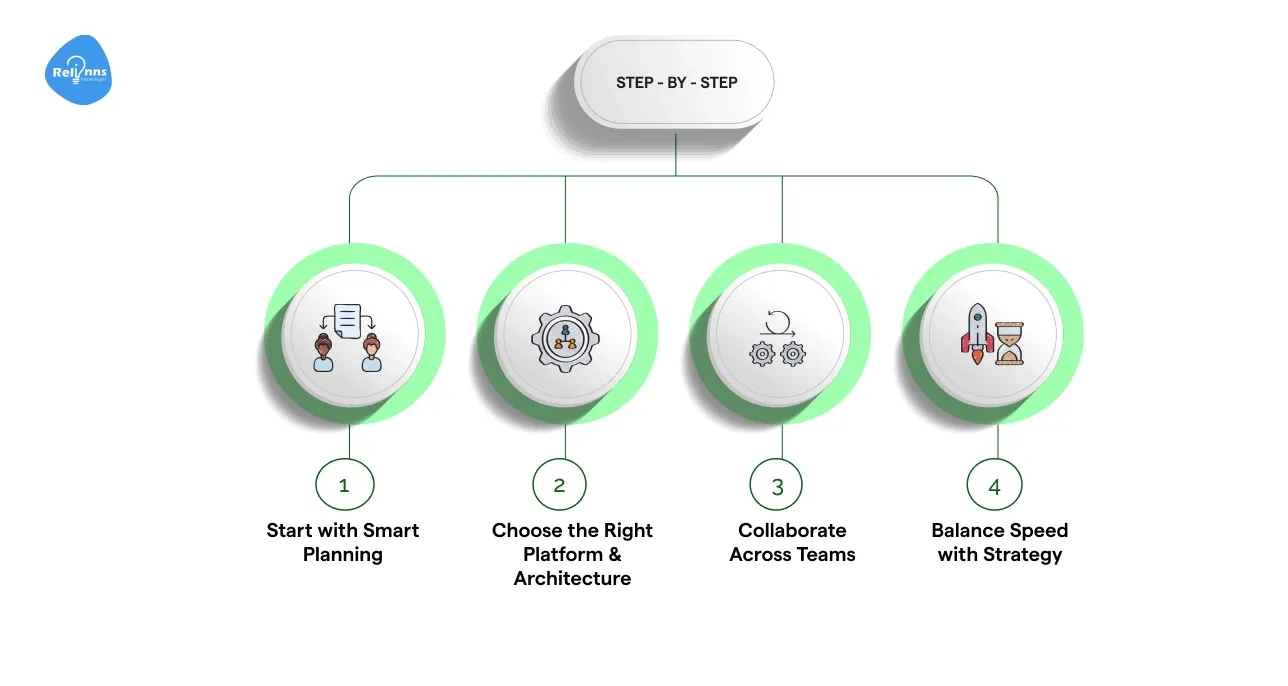
Low-code empowers insurance agencies to move faster, but speed without structure leads to technical debt. To build sustainable Life Insurance Agency Workflow Software, plan with precision, deliver iteratively, and govern clearly.
Don’t digitize broken steps. Focus on high-impact workflows, define measurable goals, and include business users early for meaningful adoption.
Step 1: Start with Smart Planning
The best results come from thoughtful preparation. Map your existing process, isolate friction points, and design workflows with long-term maintainability in mind, not just short-term speed.
- Build a simple proof-of-concept around one core workflow
- Run short sprints and gather meaningful user feedback early
- Focus on reusability—build templates and logic rules for scale
- Set up governance early with naming standards and documentation
- Avoid technical debt—track decisions and system dependencies from day one
Step 2: Choose the Right Platform & Architecture
Not all low-code platforms are equal. Prioritize those that offer native integration, strong compliance controls, and scalable cloud infrastructure suited for insurance-grade applications.
Pick a platform that offers the following
- Robust integration support with legacy tools and CRMs via APIs
- Built-in compliance features for HIPAA and regional insurance regulations
- Cloud deployment to allow auto-updates, uptime, and elastic scaling
- Compatibility with your existing core system and customer portals
- Secure role-based access control for agents, underwriters, and admins
Step 3: Collaborate Across Teams
Low-code is not a solo act. It thrives when IT, business teams, and leadership collaborate through shared goals, hands-on feedback loops, and clarity over ownership and scope.
- Involve analysts, underwriters, and IT stakeholders from day one
- Train citizen developers on core workflows and platform best practices
- Maintain a shared component catalog for faster future development
- Stick to the original scope to avoid complexity and reduce rollout risk
- After launch, capture feedback and improve with continuous iteration
Final Tip: Balance Speed with Strategy
Start with a small, controlled pilot—one business line or workflow. Then scale with structure. Low-code works best when it’s treated as a long-term strategic tool, not a quick fix.
By combining deliberate planning, architectural discipline, and cross-team collaboration, insurance agencies can build scalable, high-impact Life Insurance Agency Workflow Software that’s easy to maintain and ready to grow.
Final Thoughts: Transforming Insurance Workflows Starts Now
Low-code has the power to reshape insurance operations completely. By automating and connecting workflows—such as claims, policy issuance, renewals, and customer service—agencies can significantly reduce delays and enhance efficiency.
Experts agree that digital-first insurers gain a competitive edge without increasing costs. For agencies working on tight margins, every point of efficiency matters. Replacing outdated systems with modern Life Insurance Agency Workflow Software isn’t a trend—it’s a necessity.
Agencies that embrace low-code not only stay competitive but also enhance customer experiences, ensure compliance, and scale more quickly. Those who delay risk falling behind.
Why Choose Relinns for Low-Code/No-Code Insurance Transformation?
Relinns Technologies has helped global insurers modernize workflows using Joget DX and other low-code tools. Here’s why they stand out:
- Up to 10× faster deployment of insurance apps using Joget DX and agile sprints.
- 40% reduction in manual processing errors for claims and policy issuance workflows
- Integrated SLA timers, PDF generation, audit trails, and e-signature modules pre-built for insurers
- API-first architecture connects seamlessly with CRMs, payment gateways, and broker portals.
- Custom insurance accelerators reduce development cycles and ensure regulatory readiness from day one.
Relinns combines technical depth with insurance domain expertise to deliver scalable, secure, and fast-to-deploy Life Insurance Agency Workflow Software. Their proven track record makes them a reliable partner for insurers looking to go digital—without exceeding budget.
Frequently Asked Questions (FAQs)
What types of teams benefit most from Life Insurance Agency Workflow Software?
Life Insurance Agency Workflow Software supports underwriting, compliance, customer service, and agent teams by streamlining documentation, task tracking, approvals, and SLA management across multiple departments within the agency.
Can Life Insurance Agency Workflow Software improve collaboration between brokers and insurers?
Yes. These platforms offer shared workflows, real-time status updates, and centralized communication tools that eliminate delays and miscommunication between agents, brokers, and underwriters handling the same customer file.
How does Life Insurance Agency Workflow Software integrate with existing CRM or billing tools?
Most platforms offer native or API-based integration with CRMs and billing systems, ensuring the automatic synchronization of client data, premium records, policy changes, and communication logs within a single workflow.
Is Life Insurance Agency Workflow Software suitable for niche or regional policy types?
Absolutely. Low-code platforms allow complete customization of rules, forms, and process flows, making them suitable for regional regulations, specific product lines, or tailored underwriting practices in life insurance.
What compliance features are included in Life Insurance Agency Workflow Software?
These systems typically include audit logs, role-based access controls, encrypted storage, approval tracking, and compliance checkpoints for HIPAA, FINRA, and state-level insurance regulations, ensuring data integrity and traceability.
How should agencies start transitioning from spreadsheets to Life Insurance Agency Workflow Software?
Begin by mapping a single manual process, such as claims or renewals. Then, choose a low-code platform with pre-built insurance modules and deploy a prototype before scaling it to other workflows across the agency.


